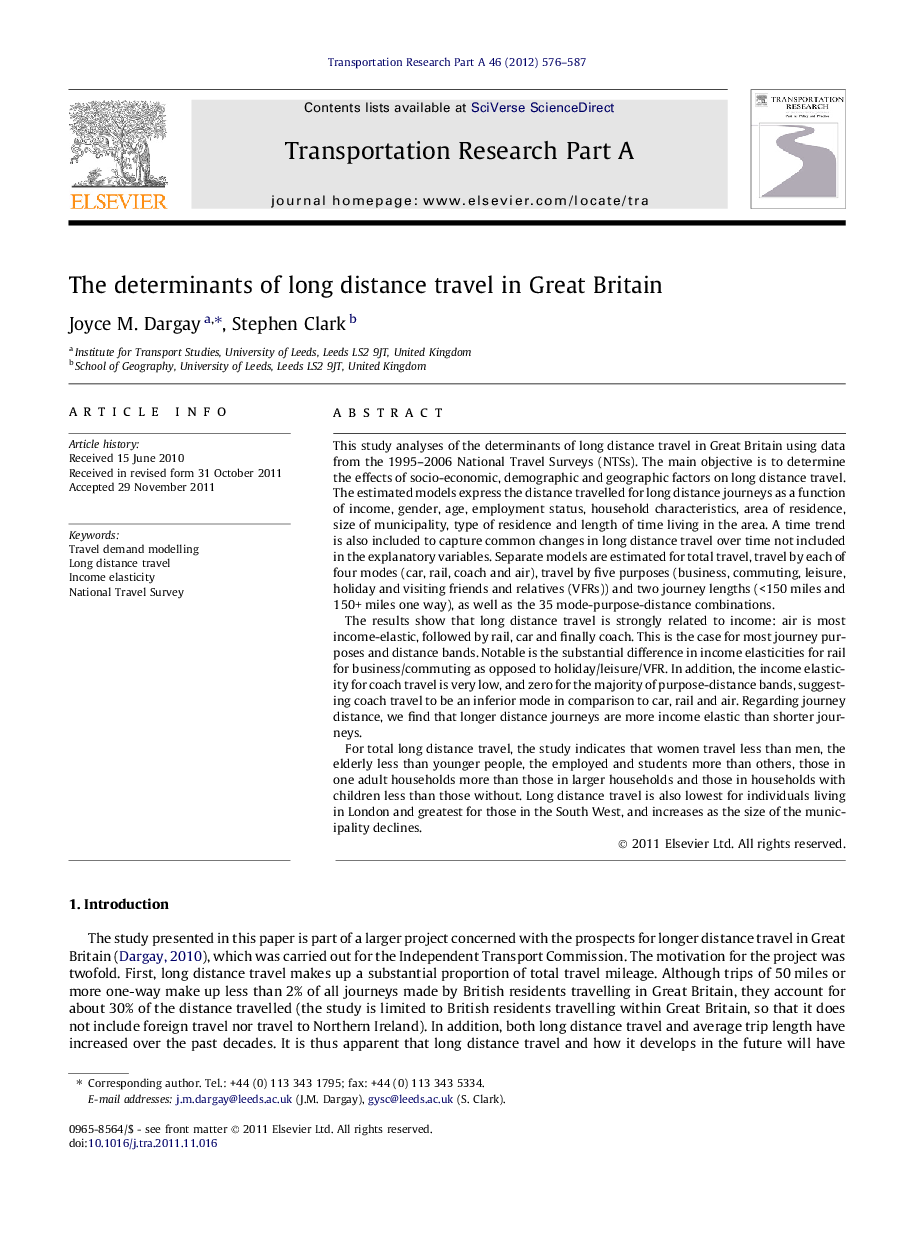| Article ID | Journal | Published Year | Pages | File Type |
|---|---|---|---|---|
| 311335 | Transportation Research Part A: Policy and Practice | 2012 | 12 Pages |
This study analyses of the determinants of long distance travel in Great Britain using data from the 1995–2006 National Travel Surveys (NTSs). The main objective is to determine the effects of socio-economic, demographic and geographic factors on long distance travel. The estimated models express the distance travelled for long distance journeys as a function of income, gender, age, employment status, household characteristics, area of residence, size of municipality, type of residence and length of time living in the area. A time trend is also included to capture common changes in long distance travel over time not included in the explanatory variables. Separate models are estimated for total travel, travel by each of four modes (car, rail, coach and air), travel by five purposes (business, commuting, leisure, holiday and visiting friends and relatives (VFRs)) and two journey lengths (<150 miles and 150+ miles one way), as well as the 35 mode-purpose-distance combinations.The results show that long distance travel is strongly related to income: air is most income-elastic, followed by rail, car and finally coach. This is the case for most journey purposes and distance bands. Notable is the substantial difference in income elasticities for rail for business/commuting as opposed to holiday/leisure/VFR. In addition, the income elasticity for coach travel is very low, and zero for the majority of purpose-distance bands, suggesting coach travel to be an inferior mode in comparison to car, rail and air. Regarding journey distance, we find that longer distance journeys are more income elastic than shorter journeys.For total long distance travel, the study indicates that women travel less than men, the elderly less than younger people, the employed and students more than others, those in one adult households more than those in larger households and those in households with children less than those without. Long distance travel is also lowest for individuals living in London and greatest for those in the South West, and increases as the size of the municipality declines.
► We model long distance travel in Great Britain using the National Travel Survey. ► We consider four modes, five journey purposes and two distance bands. ► The income elasticity for total long distance travel is 0.5. ► The income elasticity by mode, purpose and distance band ranges from 0.0 to 1.6. ► Long distance travel differs by gender, age, household type and home location.
